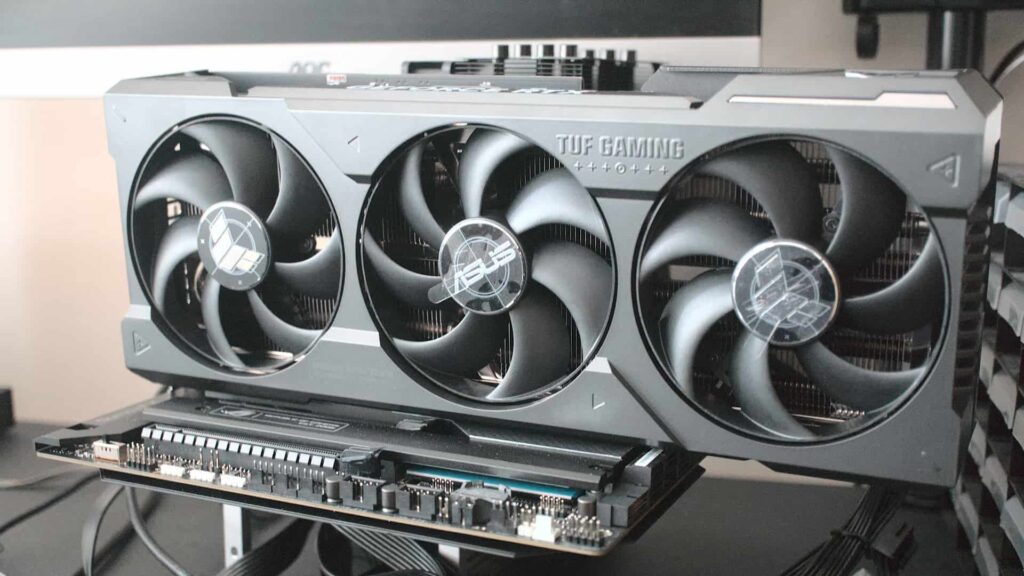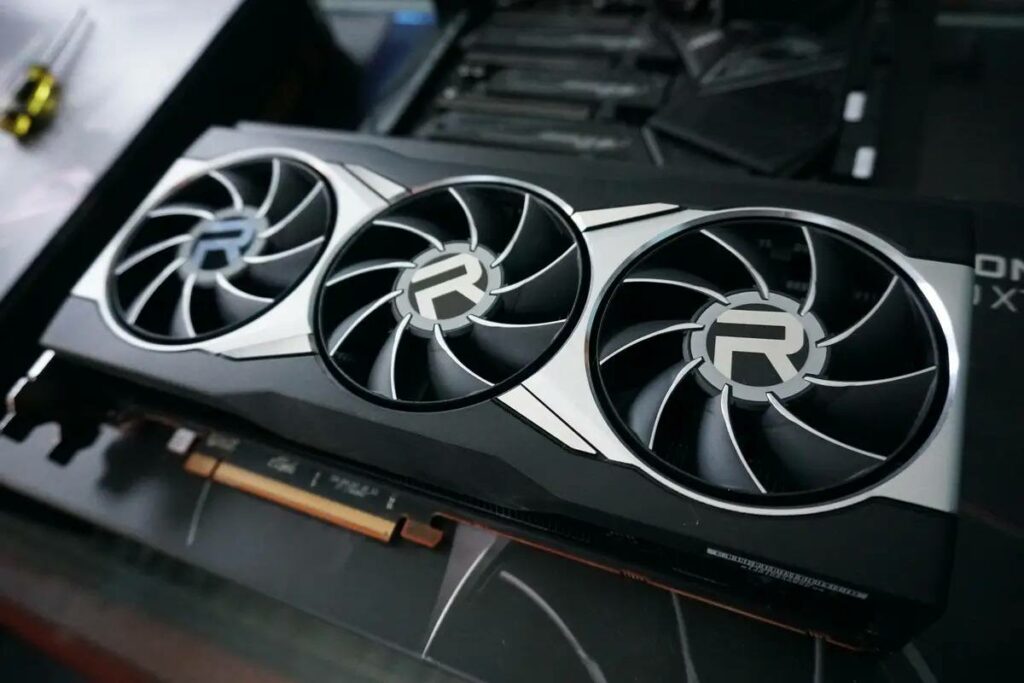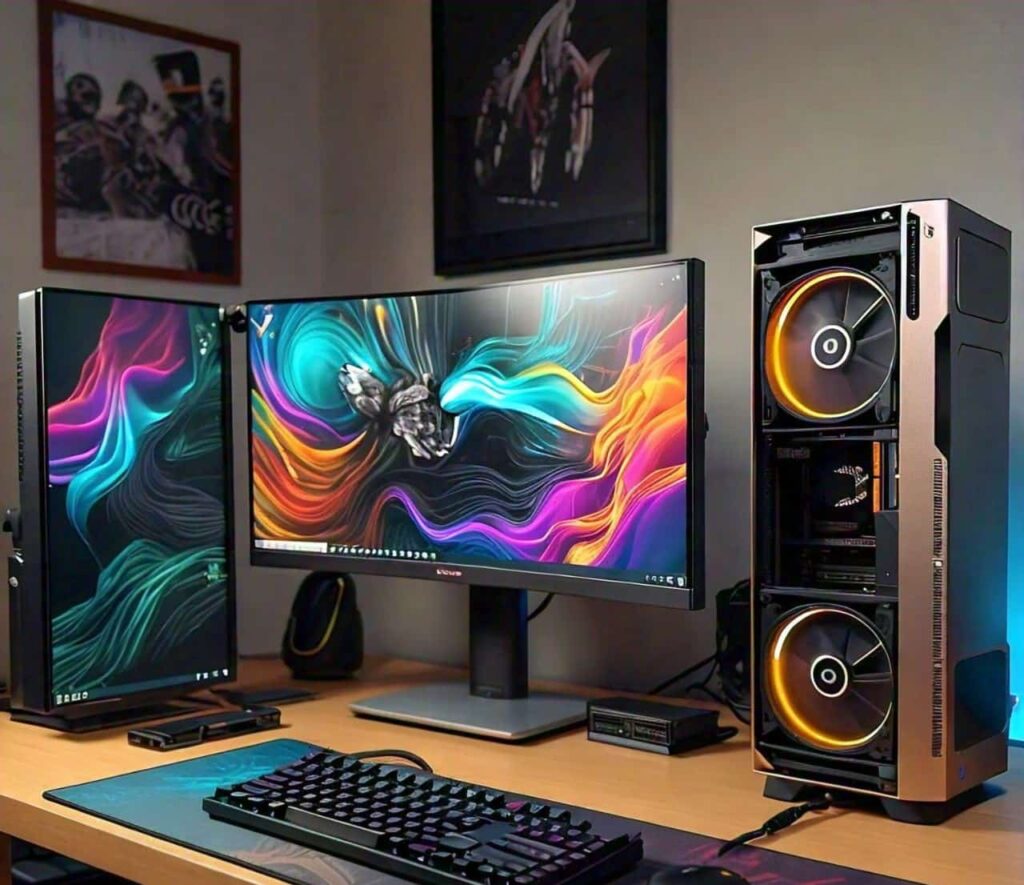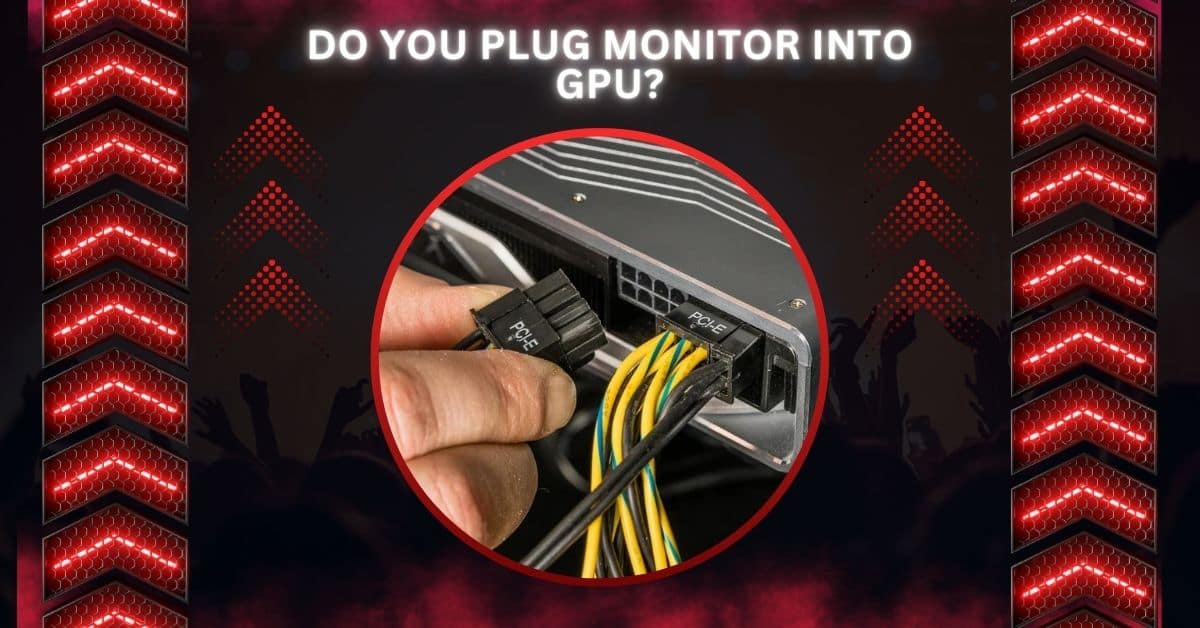Choosing where to plug your monitor is crucial for optimizing performance, especially if using your PC for gaming, graphic design, or video editing.
Yes, always plug your monitor into the GPU for better performance, especially for gaming or video editing. The GPU offers superior graphics quality compared to the motherboard’s integrated graphics.
Here’s a detailed guide on why you should typically connect your monitor to a dedicated graphics card (GPU) rather than your motherboard.
Why Connect the Monitor to the GPU?
A GPU is specifically designed to handle heavy graphical tasks, such as gaming and high-resolution displays. When you connect your monitor directly to the GPU, you’re tapping into its dedicated resources, which results in smoother graphics, faster performance, and the ability to use higher display settings.
Conversely, if you connect your monitor to the motherboard, you’re limited by the onboard graphics, which are generally weaker and less capable.
Performance Boost

Connecting your monitor to a dedicated GPU, you harness its full power. GPUs are specifically designed for handling complex graphical tasks, ensuring smoother visuals and faster frame rates, which is especially important for gaming, 3D modeling, and video rendering.
By contrast, connecting your monitor to the motherboard relies on integrated graphics, which share resources with your CPU and are far less powerful. This leads to reduced performance in graphics-heavy tasks like gaming or video editing.
Also Read: Does Plex Need A GPU – Exploring Performance Benefits: 2024!
Integrated vs. Dedicated Graphics
Integrated graphics, found in many CPUs, are suitable for basic tasks like browsing, word processing, and casual video playback.
However, they can need help with high-resolution or high-refresh-rate monitors and can’t handle the demands of modern games or professional software. Most modern GPUs have dedicated memory (VRAM), ensuring better performance in demanding applications.
Multiple Displays
Another benefit of using a dedicated GPU is its ability to support multiple monitors simultaneously. The GPU offers better support for handling these extra outputs if you use various displays for multitasking, gaming, or productivity.
Most GPUs today have multiple ports (HDMI, DisplayPort, etc.), making it easy to connect several monitors without sacrificing performance. In contrast, motherboards usually have limited outputs and may not even efficiently support more than one display.
Integrated Graphics Auto-Disable
When a dedicated GPU is installed in most desktop PCs, the system automatically turns off the integrated graphics through the BIOS.
Plugging your monitor into the motherboard may not work, as the integrated graphics would be inactive. If it did work, you would end up with a black screen or minimal performance. Therefore, using the GPU ensures you’re using the optimal hardware.
Also Read: What Is Normal GPU Usage While Gaming? – Complete Guide!
Special Cases: Multiple Graphics Options

While most setups benefit from connecting directly to the GPU, some users wonder if they can connect a second monitor to the motherboard for multitasking.
In rare cases, if your BIOS allows it, you can enable both the GPU and integrated graphics for hybrid use, especially for specific scenarios like non-demanding tasks on a secondary monitor. However, this setup can be tricky, often leading to mismatched performance across monitors.
Compatibility and Troubleshooting
When setting up your system, ensure that the right drivers are installed and your BIOS is configured correctly to prioritize the GPU over integrated graphics. Sometimes, simple issues like outdated drivers can cause monitors connected to the GPU to remain unrecognized.
Ensuring you use the right cables (HDMI, DisplayPort) and update your graphics drivers can help resolve common issues.
Energy Efficiency and Heat
While more powerful, GPUs consume more energy than integrated graphics. This might be a consideration if you’re trying to build an energy-efficient setup.
However, for most users, especially gamers and professionals, the performance gains from using a GPU far outweigh any potential savings in power consumption.
Does Plugging the Monitor Into the GPU Improve Gaming?
Yes, connecting your monitor to the GPU dramatically enhances gaming performance. A dedicated GPU can efficiently handle the heavy graphical processing required for modern games, providing higher frame rates and smoother gameplay.
If you plug your monitor into the motherboard, you’ll be using integrated graphics, which can result in lower performance, less detailed textures, and lag.
What Happens If You Connect the Monitor to the Motherboard?
The performance will be significantly limited if you connect your monitor to the motherboard instead of the GPU.
While functional for basic tasks like web browsing or document editing, integrated graphics cannot handle intensive tasks such as video rendering or gaming. Also, if your CPU doesn’t have integrated graphics, you might not even get a display.
Is It Okay to Plug a Monitor Into the Motherboard?
While it’s okay to plug your monitor into the motherboard for everyday tasks like browsing or streaming, it could be better for more demanding work.
For tasks that involve heavy graphics—such as video editing or gaming—plugging into the GPU will give you a much better experience.
Must Read: What Is GPU Hotspot Temperature? – Key Facts For Gamers!
Should I Plug My Second Monitor Into the GPU or Motherboard?

It’s best to connect both monitors to the GPU if you’re using a multi-monitor setup. This ensures that both displays benefit from the enhanced graphical power of the dedicated GPU.
Using the motherboard for the second monitor may work for basic tasks, but it could limit the display quality and performance.
Can I Use Both GPU and Motherboard for Dual Monitors?
Connecting one monitor to the GPU and the other to the motherboard is possible, but this setup can be tricky. Some motherboards support dual display setups with both integrated and dedicated graphics.
However, the performance on the monitor connected to the motherboard will be noticeably lower. For the best experience, connecting all monitors to the GPUis recommended.
What If My GPU Doesn’t Have Enough Ports?
If your GPU doesn’t have enough ports for multiple monitors, you can use adapters such as HDMI splitters or DisplayPort hubs to extend the number of available ports. This will allow you to run multiple monitors through the GPU, ensuring consistent performance across all screens.
How to Choose the Right Cable for GPU?
Modern GPUs typically come with a variety of ports, such as HDMI, DisplayPort, and sometimes DVI. When connecting your monitor, use the highest-quality port available. HDMI and DisplayPort are generally preferred for transmitting high-definition video and audio.
Must Read: Which Display Port To Use On GPU? – The Ultimate Setup!
Can You Game with the Monitor Plugged Into the Motherboard?
While it’s possible to game with the monitor connected to the motherboard, the experience will be far from ideal.
Most games today require more graphical power than integrated graphics can provide. If you’re serious about gaming, always plug the monitor into the GPU.
Is It Safe to Switch Between GPU and Motherboard?
You can switch between the GPU and motherboard display outputs, but doing so frequently may require changes in BIOS settings.
Some systems automatically turn off the integrated graphics when a dedicated GPU is installed. If you often switch between the two, you may need to enable integrated graphics in the BIOS manually.
FAQs
1. Should I connect my monitor into my motherboard or GPU?
You should connect your monitor to the GPU, not the motherboard, for better performance in gaming and video editing tasks. The GPU offers higher graphics quality.
2. Do you plug monitor into graphics card or motherboard?
Plug the monitor into the graphics card, especially for gaming or graphics-heavy tasks. The graphics card is more powerful than the motherboard’s integrated graphics.
3. Do you plug monitor into GPU HDMI?
Yes, if your GPU has an HDMI port, it’s a great option for connecting your monitor. High quality audio and video are supported via HDMI.
4. Do you plug monitor into GPU motherboard?
To get the best performance, always plug the monitor into the GPU, not the motherboard. The motherboard’s integrated graphics are usually less powerful.
5. How to plug monitor into GPU?
To connect, locate the HDMI or DisplayPort on the GPU at the back of your PC. Plug your monitor’s cable into one of these ports for optimal performance.
6. Can you plug monitor into motherboard and GPU?
Yes, but it’s not recommended for demanding tasks. Connect both monitors to the GPU, not the motherboard, for better performance.
7. Monitor plugged into GPU not working
Check if the GPU is seated correctly in the slot, the cables are secure, and the drivers are updated. Also, ensure the GPU is enabled in the BIOS.
8. Where to plug monitor into gaming PC?
For the best gaming performance, always plug your monitor into the GPU port on a gaming PC, usually located on the back panel.
9. How to connect monitor to PC with graphics card?
Find the HDMI, DisplayPort, or DVI on your graphics card and plug the monitor cable into the matching port for the best graphics quality.
10. Should I use HDMI or DisplayPort for GPU?
If available, use DisplayPort, as it generally offers better performance and supports higher refresh rates. HDMI is also good but is typically used for TVs.
Conclusion
For optimal performance, especially in gaming and graphic-heavy tasks, always connect your monitor to the dedicated GPU, not the motherboard. The GPU delivers superior graphics processing, smoother visuals, and higher frame rates than integrated graphics.
